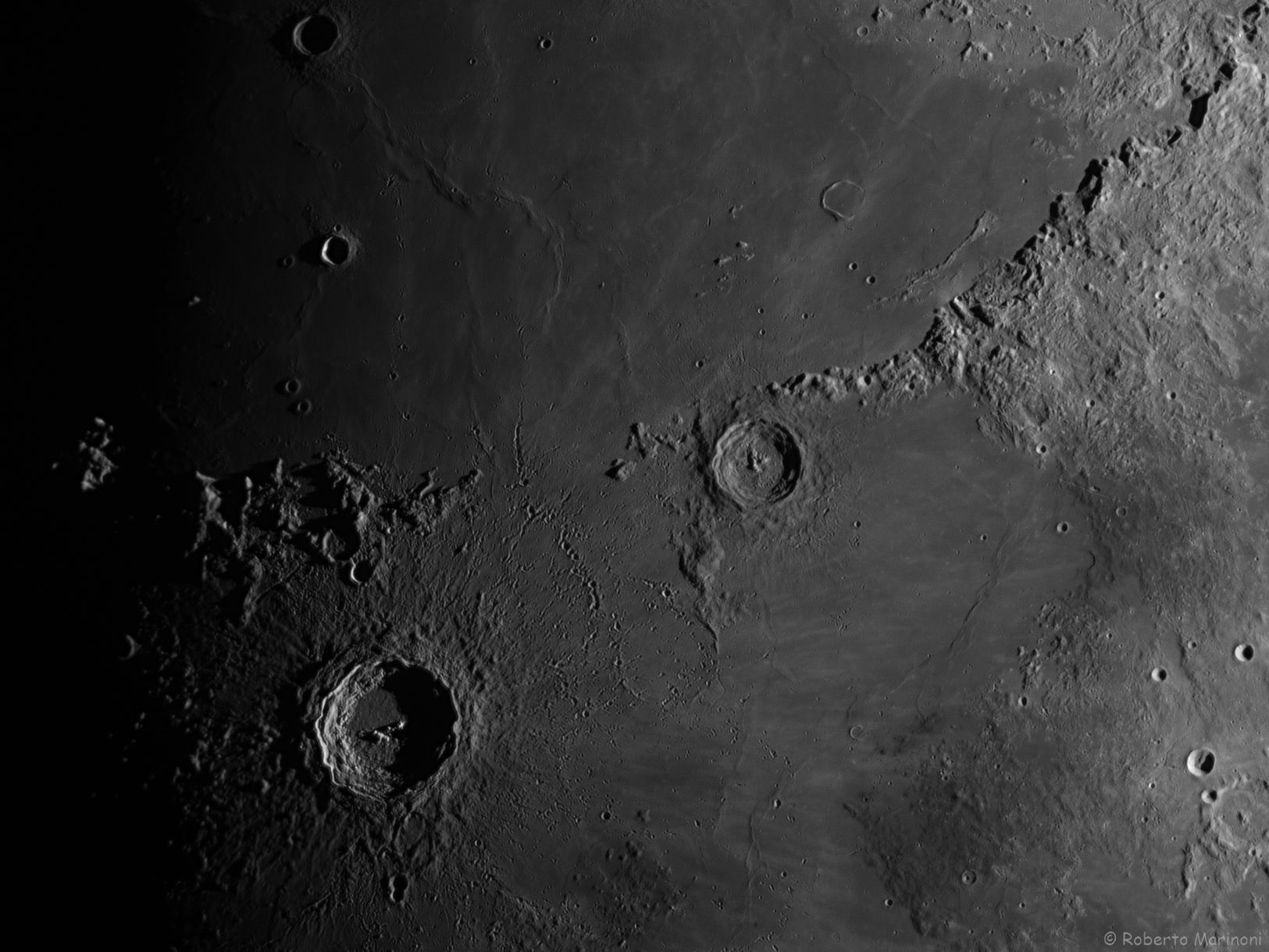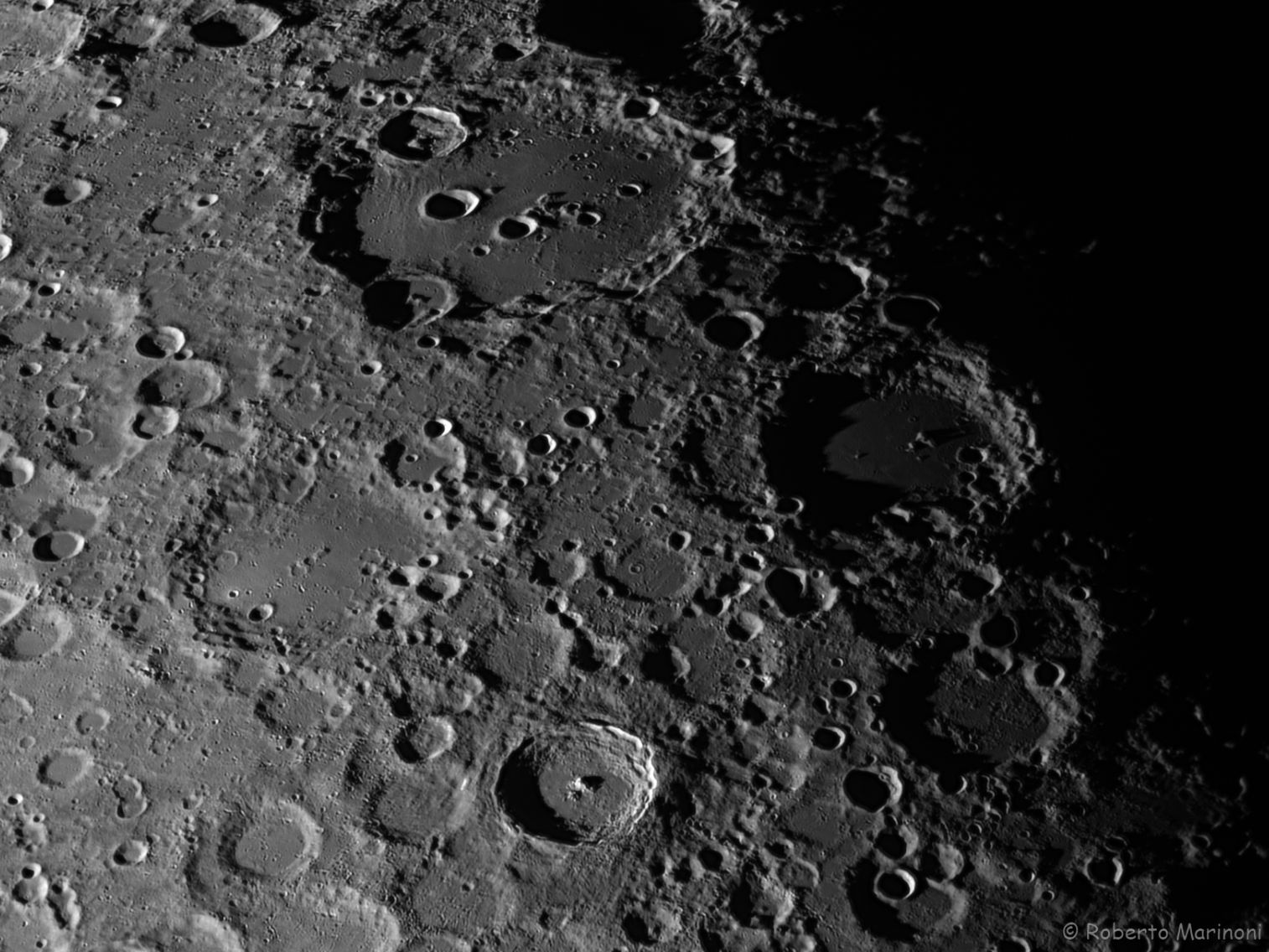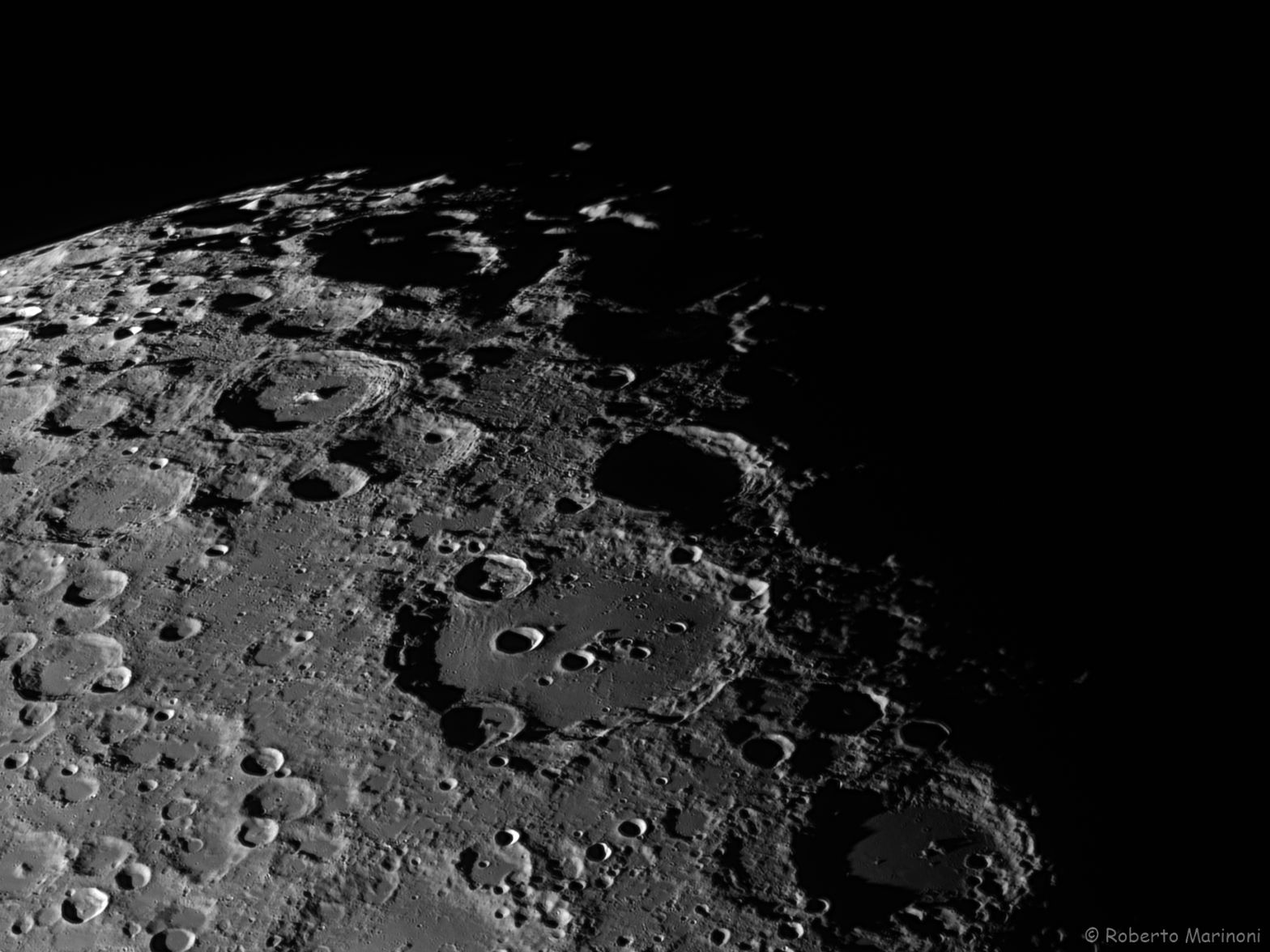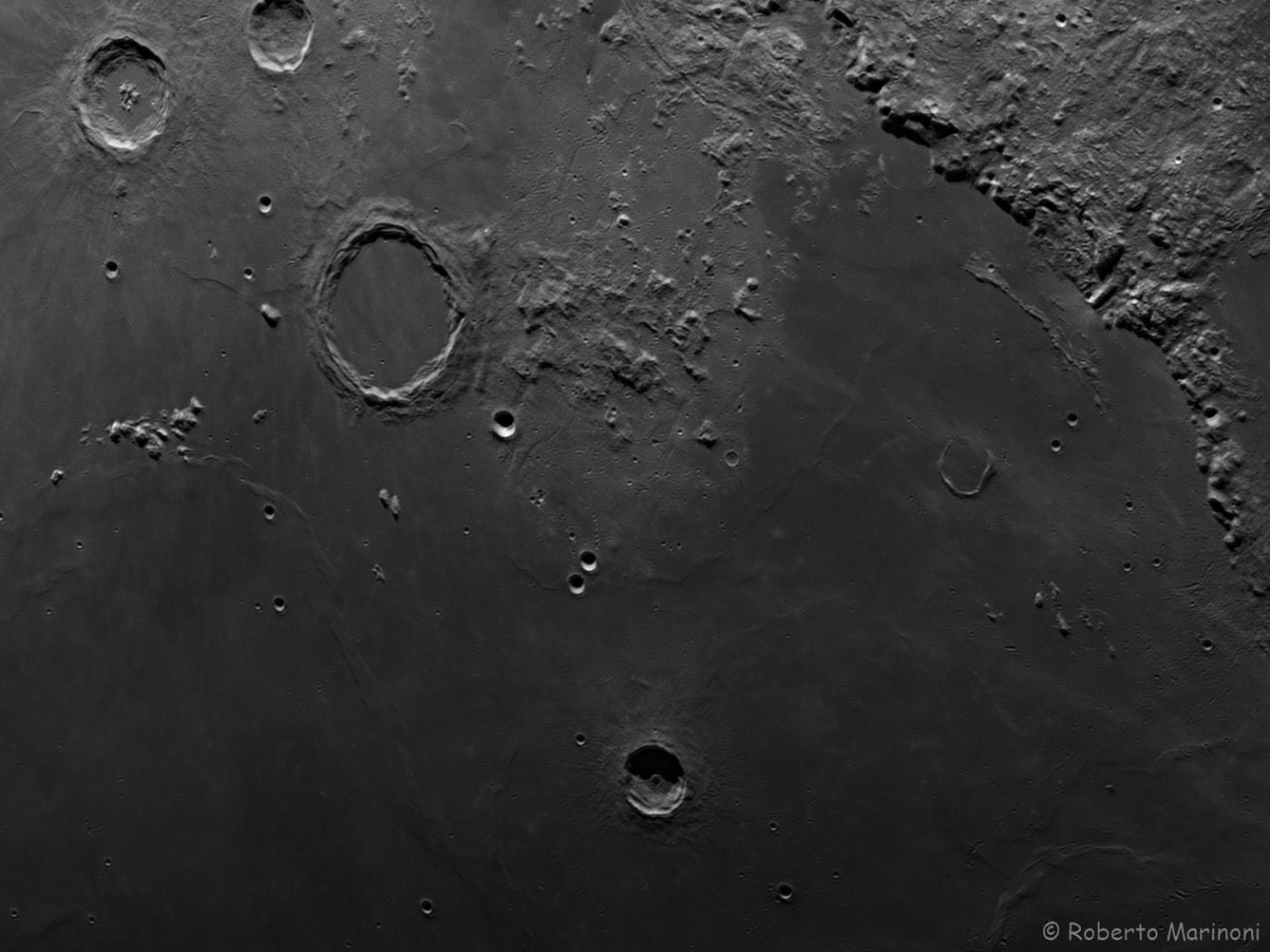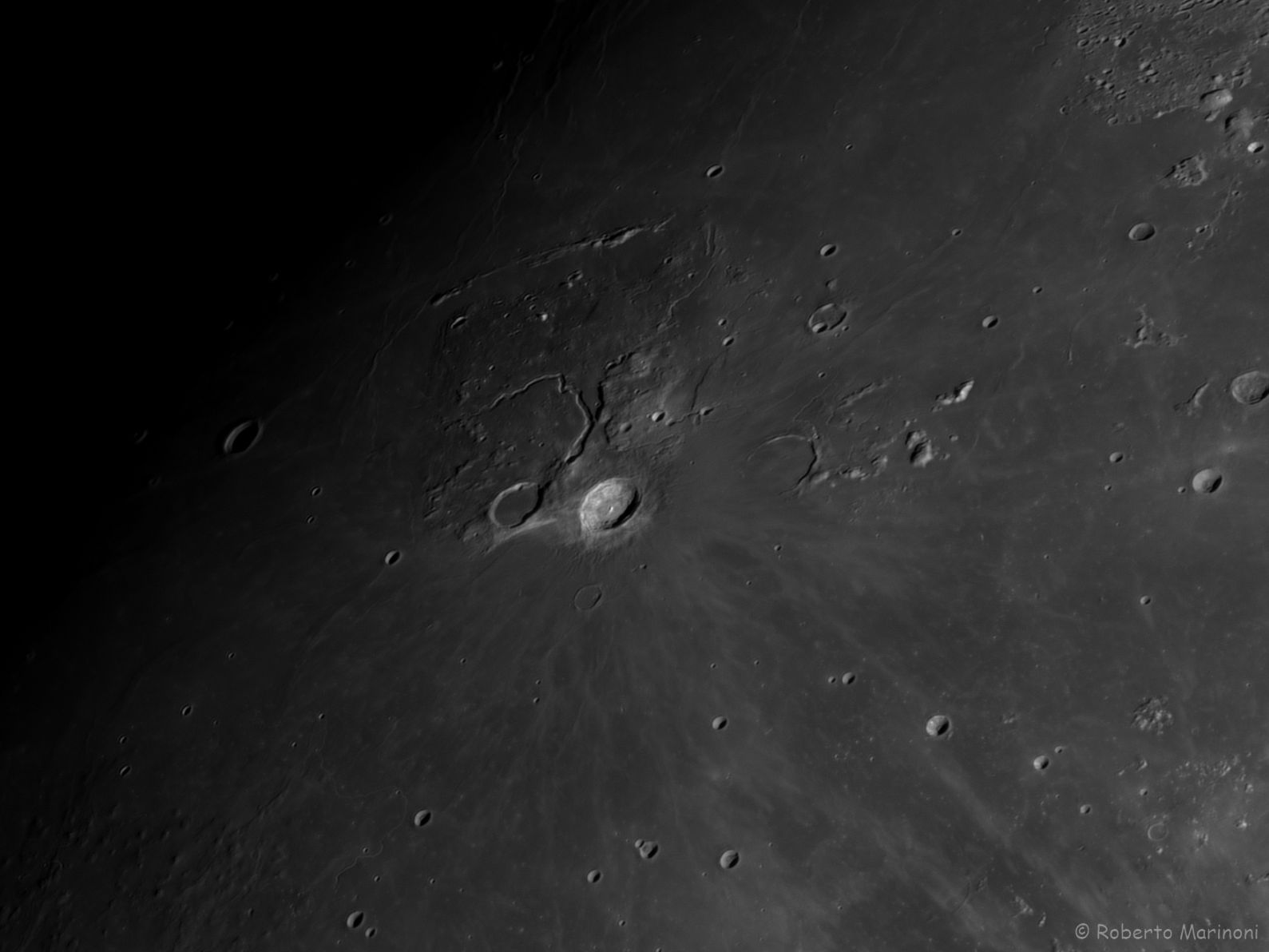Moon - Craters
Celestron C9.25 f/10 with ASI 178MM and Baader red filter, sum of 400 frames
Clavius and Tyco
These two magnificent craters dominates the souther part of the moon.
Clavius has a diameter of 231km and shows several smaller craters inside it. Tycho has a diameter of 88 km and shows a central peak which is 2.25 km height with respect to its floor.
Celestron C9,25 f/10 with ASI 178MM and Baader red filter, sum of 500 frames
Gassendi
This crater (114 km diameter) is located on the norhern border of Mare Humorum. Its floor is characterized by the presence of several rimae and central peaks. On the northern side of Gassendi it is visbile the crater Gassendi A, so that the two craters resemble a diamond ring.
Celestron C9,25 f/10 with ASI 178MM and Baader red filter, sum of 500 frames.
Clavius and Moretus
These two beautiful craters dominates the southern side of the Moon.
Clavius has a diameter of 231 km and shows several small craters inside it.
Moretus has a diameter of 114 km ans shows a very prominent central peak and terraced walls.
Celestron C9.25 f/10 with ASI 178MM and Baader red filter, sum of 500 frames.
Archimedes
Archimedes is the biggest crater visible in this image. It has a diameter of 83 km and shows a flat floor, without central peak: this is probay due to the leak of lava from inside, which has filled all the internal part of the crater so hidding the central peak.
Celestron C9,25 f/10 with ASI 178MM and Baader red filter, sum of 250 frames
Celestron C9,25 f/10 with ASI 178MM and Baader red filter, sum of 390 frames.
